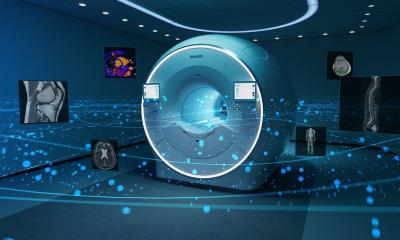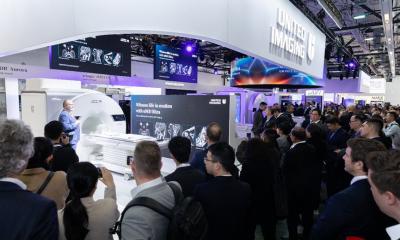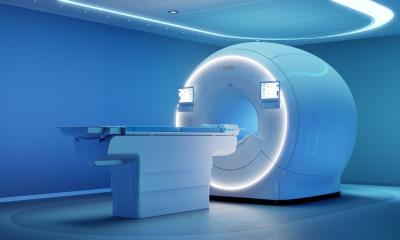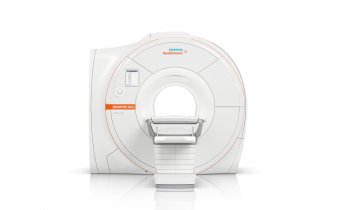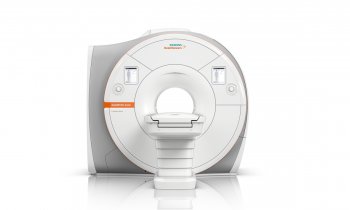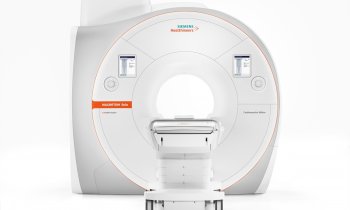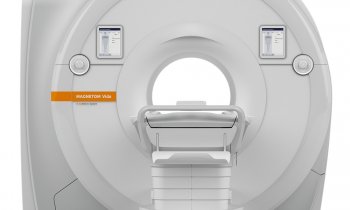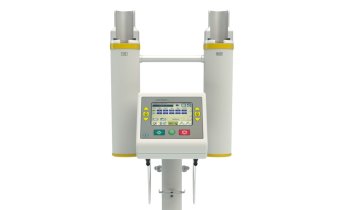© Gorodenkoff – stock.adobe.com
Article • Appeal for greener imaging at radiology congress
MRI: AI enables faster, more sustainable scans
“Is ecological also economical” was the theme of a webinar organised as part of the German Radiology Congress (RÖKO). Four experts discussed how artificial intelligence (AI) can be used to reduce energy consumption and discussed whether the trend towards ever faster and better magnetic resonance imaging scanners is justified.
Article: Sonja Buske
To put things into perspective, Dr Daniel Truhn, radiologist and medical physicist from Aachen, opened the event with a few key figures: ‘An average MRI scanner consumes almost 60 tonnes of CO2 per year. An average EU citizen has a CO2 footprint of 7 tonnes per year, and a flight from Munich to New York consumes 1 tonne of CO2 per passenger.’
So, do we really constantly need newer devices and is a 3T MRI really superior? If smaller devices can be made faster with AI, we should seriously question this
Saif Afat
PD Dr Saif Afat, Senior Consultant at the Department of Radiology at Tübingen University Hospital, then asked how MRI can be made more sustainable and whether new technologies can reduce power consumption. He emphasised the advantages of low-field MRI, which offers reduced running costs and lower installation expenses. On the other hand, scans in a 0.55 Tesla MRI take longer and produce poorer image quality. His team in Tübingen therefore investigated whether the use of deep learning (DL) sequences could reduce energy consumption whilst speeding up the examinations. For this, protocols of the hip, knee, spine and shoulder were compared. ‘The DL sequences had significantly lower power consumption compared to the standard sequences,’ Afat reported. Overall, his team achieved a reduction in consumption of 72% in the four body areas. The examination of the knee could also be shortened from almost three to just over one minute thanks to DL. The results were even more pronounced for the shoulder scans; here, the time saving was a full six minutes. With regard to the shortage of skilled labour, Afat suggested that AI could help to reduce the workload on staff. There are 531 FDA-approved AI tools available for radiology alone, he said.
Recommended article

Article • Plenary discussion at ECR 2023
Sustainable radiology: why it takes more than “greener” imaging systems
It’s clear that radiology is lacking in the “green” department: healthcare still causes a large share of global greenhouse gas (GHG) emissions, not least due to diagnostic imaging. Dr Sarah Sheard from Imperial College Healthcare, UK, invited her ECR audience to take a closer look at radiology’s climate footprint – and revealed ways to make the field more sustainable.
New isn’t always better
‘So, do we really constantly need newer devices and is a 3T MRI really superior?’ Afat asked, answering the question himself immediately: ‘If smaller devices can be made faster with AI, we should seriously question this.’ Radiologist Isabelle Redenius from Braunschweig added: ‘We need imaging that helps patients and practitioners. This doesn't always require the latest MRI.’ However, she also pleaded for raising awareness of the fact that AI also consumes CO2. The aim should be to make AI more efficient, so that its use is justifiable.
Ideally, the sustainability of a device should already be taken into account at the time of purchase. To facilitate this Afat suggested for MRIs to be assigned an energy efficiency class in future, similar to refrigerators. Medical physicist Kerstin Jungnickel recommended that a sustainable specification should also be included in tenders.
01.09.2024



